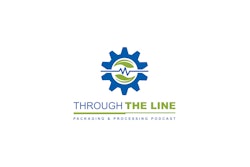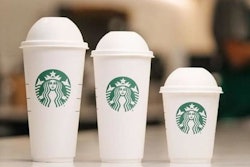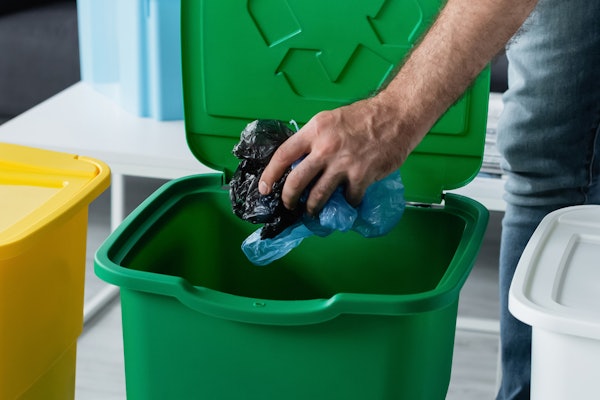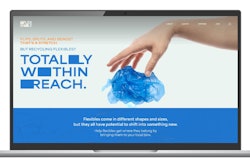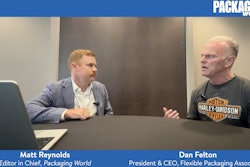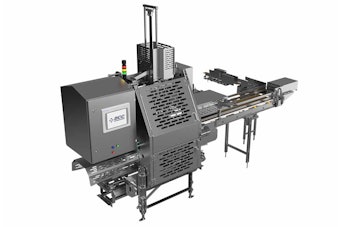
The plastic cable ties used to hold products in place on a paperboard card may seem like a negligible amount of packaging, but according to Wire Cabling, as many as 100 billion of these non-recyclable cable ties are produced worldwide annually. In its journey to reduce 40% of its plastic packaging content by the end of 2024, baby lifestyle brand Munchkin, Inc., owned by WHY Brands, Inc., realized this small but consequential packaging component had to go.
Van Nuys, Calif.-based Munchkin, launched more than 30-plus years ago with a focus on innovative baby products and now a leading children’s lifestyle brand, has a storied history when it comes to developing packaging that is kinder to the planet—and to animals, in particular. In 2021, when news that a stray kitten had become entangled in a plastic ring used for its Any Angle trainer cup, the company not only paid for the kitten’s medical expenses, but it also redesigned its entire line of cup packaging to ensure no other animal would face the same plight. After a year of R&D, Munchkin introduced a paper packaging solution for its 500 cup SKUs that is animal safe and reduces its use of plastic by 643,630 lb annually.
From cups, Munchkin gradually moved to utensils. “While it was easy to remove the plastic blister on utensils, it didn’t yet feel like an improvement because there were still these small plastic components in the packaging,” says Diana Barnes, chief brand officer and creative director of WHY Brands, Inc. “As a result, we challenged ourselves to make it 100% plastic free, and thus paper ties were born.”
 | Read another article about a switch from plastic to paper packaging in, “Paper Sachet for Skin Care Reduces GHGs by 69%” |
Before landing on paper to replace its plastic cable ties, Barnes says Munchkin evaluated a number of other alternatives, including biodegradable and compostable plastics as well as Velcro. Regarding the former, “both options have limited applications where they are a good replacement for traditional plastics, and ties aren’t one of them,” she says.
As for the latter, Velcro is generally made from nylon and/or polyester and has recycling and cost issues, so Munchkin dismissed this option as well.
The company also looked at traditional paper ties, but they usually have a metal thread running through them. “Although these are plastic free, they aren’t recyclable because of the mixed materials,” Barnes says.
The solution came in the form of a paper product with similar characteristics to string. The paper cable tie can be made from recycled content and can be recycled or will break down in a landfill or in home compost, similar to other organic materials.
“The biggest challenge when developing the paper tie was ensuring that it was a better alternative and just as durable as a plastic cable tie,” says Barnes. “To ensure that 100% of our packaging is safe for the animal planet, we planned to transform our packaging design and ignite a redesign revolution by conducting several Life Cycle Assessments of plastic-and paper-based materials, measuring the total environmental impact over their lifespans to validate conjecture. The results showed that paper is superior to plastic, ultimately being less harmful to produce and easier to recycle, while also being a regenerative resource.”
After receiving samples of the paper tie from a proprietary supplier, Munchkin developed a molded-pulp backing plate to reinforce the tie and prevent ripping. The combination of the paper ties with the molded-pulp securing mechanism proved to be just as strong as plastic and metal-wire equivalents. To ensure the backing plate was strong enough without using too much material, Munchkin transit-tested different configurations.
“It is an ongoing process as we learn and apply it to different applications,” says Barnes. “The main function of these ties is to hold the product in place without the thermoform blisters. In almost every redesign, we saw an overall reduction in materials. Fortunately, most of our product is light and durable, so the change was easy for us with minimal damage being made to the product.”
The paper cable ties and backing plate are made with 60% PCR—as is the case with all of Munchkin’s paper-based packaging—and are used across several categories, including bath products, sippy cups, snack catchers, and utensils and feeders, among others. The ties and plates are applied manually, just as the plastic ties were.
 | Watch this related video, “Nestlé and Mars Wrigley Roll Out Paper-Based Confectionery Packs Replacing Plastic Predecessors” |
“There’s a slight increase in cost, mostly from a labor perspective,” Barnes shares. “However, it’s nominal, and Munchkin is willing to absorb it to do the right thing.”
According to the results of LCAs conducted by the company, the paper cable ties have helped reduce Munchkin’s annual CO2 output by 794,766 lb when the footprint of its previous packaging—a blister card, PET blister, and plastic cable tie—is compared with that of the current blister card and paper tie package. It’s also resulted in the elimination of more than 133,000 lb of plastic, which is equivalent to 1,197 miles in length of plastic ties.
Says Barnes, “As the world’s most-loved baby lifestyle brand, we recognize our duty to enact impactful and sustainable business practices and pave the way forward for future businesses and generations. It is a pivotal time to create sustainable change, and we are proud of the paper trail we are leaving behind.” PW


